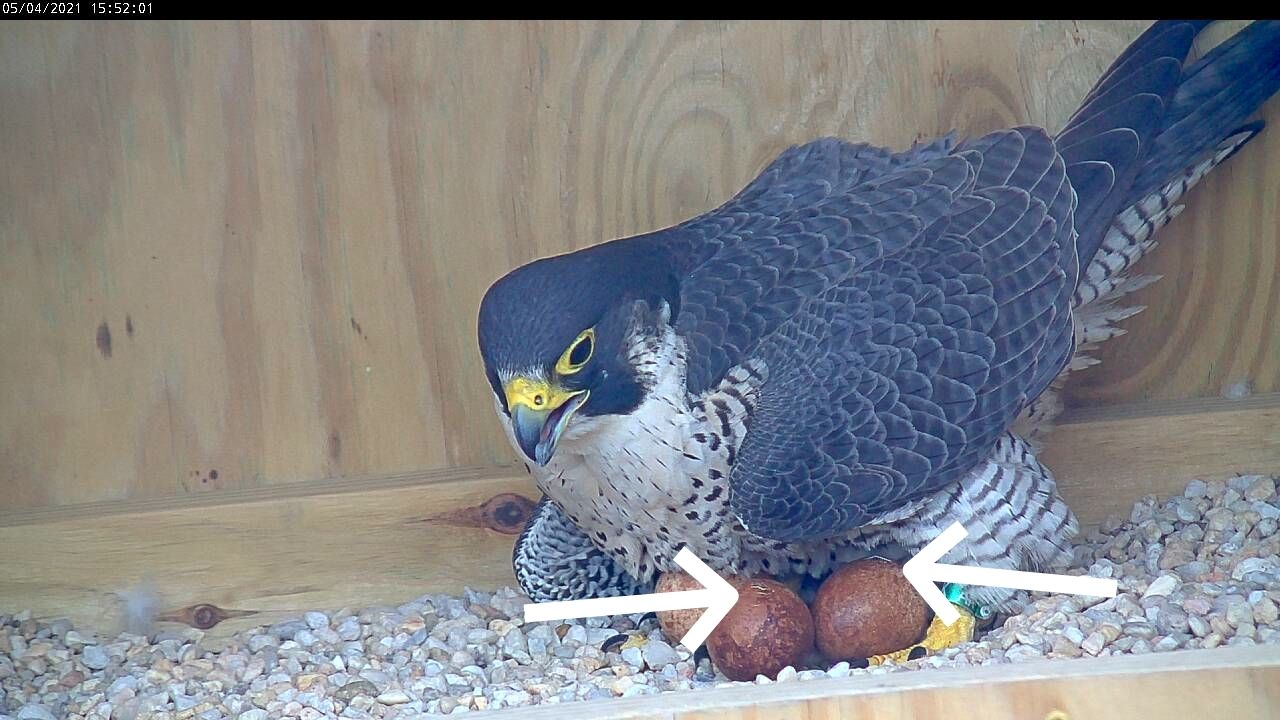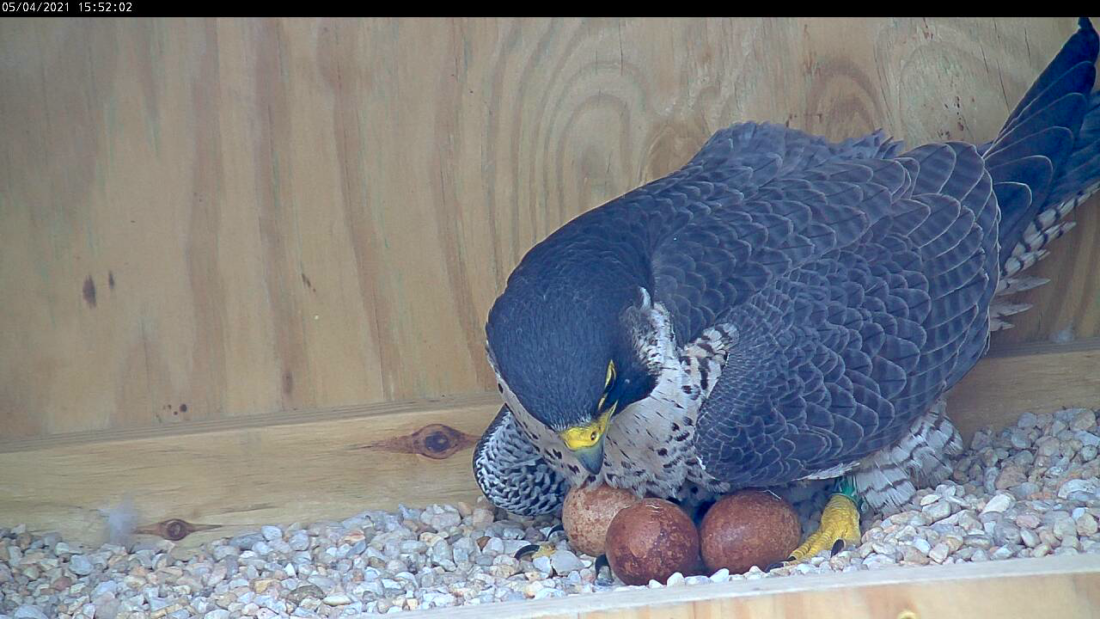Pipping Observed on Two Eggs!
On a hot, 90-degree day in downtown Richmond, two of the four peregrine falcon eggs are currently in the process of hatching. A DWR biologist recently noticed signs of “pipping” on two of the eggs at about 4:00 p.m. on the afternoon of May 4. When a chick starts hatching, the first sign is a pip, or the initial hole the chick makes in its egg. Small cracks were observed on two of the eggs toward the front of the nest as the female falcon shifted her incubating position.

The pips are on the tops of the two eggs in the front.
The act of hatching is a long and energetically demanding process for chicks, as they use an egg tooth (a small knob on top of their bill) to repeatedly peck and push into the pip in the egg, creating a large enough crack that they can eventually break through. This hammering is an exhausting process requiring the chick to take several rests throughout hatching.
Overall, the entire process usually takes anywhere from 12 to 18 hours, but in some extreme cases it can take upwards of 72 hours. After the chick has finally hatched, it no longer needs its egg tooth, which falls off several days after its emergence from the egg.
We will continue to closely monitor the pipping chicks’ progress and hope to see signs of the other eggs hatching soon!

A closer look at the pips.

The female carefully rearranged the eggs before returning to incubation.

